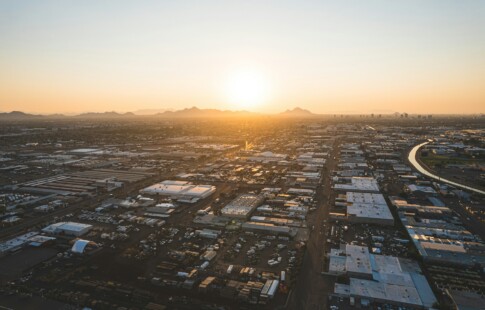
Food Packaging Waste Statistics: Understanding the Rise of Food Packaging Waste
We are reader-supported. When you buy through links on our site, we may earn affiliate commission.
Food waste is a global environmental issue that calls for much more sustainable practices across the globe. Our consciousness around this issue is rising, and environmental scientists are crafting solutions. It is vital to continue challenging the problem of wasting food. But it’s not the whole picture.
Food packaging waste is a significant environmentally degrading aspect of the food industry that consumers somewhat neglect. Walking down the aisles of an American grocery store, you’ll observe the majority of food presented in plastic packaging.
The rise of processed foods in the country has led to an increase in waste. There are solutions, but we have to commit to them. Let’s first dive into the problem itself.
What Is Food Packaging Waste?
Food packaging waste derives from containers that are non-compostable and difficult to degrade. These packages consist of plastic, glass, metal, wax, cardboard, ceramics, and more.
Almost all of the food containers we see in the grocery store are single-use, meaning you cannot reuse them for their original function.
Out of the millions of tons of solid waste produced by the U.S., 63% of it derives from packaging materials. Food packaging waste statistics point to a significant problem in our society. We are contributing to the issue of climate degradation when we produce and throw away these containers. Most of this harm originates from plastic, glass, and aluminum packaging.
Plastic
The production of plastic contributes high quantities of pollutants to the environment. One pound of plastic creates three pounds of carbon dioxide (CO2) during manufacturing. CO2 is a greenhouse gas that traps heat in the atmosphere, causing rising global temperatures.
Plastic production utilizes 4% of the world’s total fossil fuel supply, further emitting destructive greenhouse gases into the environment. This energy-intensive production is concerning when evaluated in terms of the quantity of consumption. Plastic is everywhere, from berry cartons to peanut containers.
The sheer scale of production leads scientists to predict that plastic production will account for 56 gigatons of CO2 emissions from now until 2050. But the environmental impact does not stop after the production process. Customer behaviors contribute to the effects through solid waste.
Some 12.7 million metric tons of humanity’s discarded plastic waste ends up in the ocean every year. Plastic never fully decomposes. Instead, it breaks down into smaller and smaller particles called microplastics. These microplastics are ingested by marine life and then by humans when we consume seafood.
This poses adverse health effects to humans, other life forms, and our atmosphere.
Glass
In glass production, materials are melted and formed into food containers. Fossil fuels drive this process and emit CO2 during production. Evaporation from the glass itself also releases polluting particles into the atmosphere.
The development of glass food containers contributes to the destruction of our environment – and it does not stop there. Glass does not decay, so when we throw away packaging consisting of this material, it piles up in landfills. Luckily, in most states, you can recycle glass.
We outsource most of our recycling in the U.S. Transporting recyclable materials utilizes significant fuel quantities, which contributes further to these products’ carbon footprint. It’s also difficult to track these shipments once they leave the country to ensure that they are recycled properly.
Aluminum
In 2018, we produced nearly 1.9 million tons of aluminum packaging. From soda cans to chip bags, we view these containers all throughout our grocery stores. Aluminum utilizes various nonrenewable resources in its development.
Manufacturers smelt elements when making aluminum. This releases greenhouse gases, water vapors, and other pollutants into the atmosphere. These air pollutants affect the composition of our ecosystem and the maintenance of life on Earth. And when aluminum is recycled, it goes back through the same smelting process.
Aluminum is another common packaging material that has difficulty degrading. It takes hundreds of years for an aluminum can to break down in a landfill.
Fortunately, there are ways to reduce the impact of these processes.
How to Reduce Food Packaging Waste
There are various ways to reduce your food packaging waste through restriction, replacement, and reuse. To limit this waste, one can:
- Bring their own to-go containers to restaurants for leftovers.
- Shop at grocery stores where you bring your own containers and bags for food.
- Buy products that come in compostable packaging rather than plastic, glass, or aluminum.
Transform old packages into new goods, like wine bottle candle holders, wrapper-quilted reusable bags, and cardboard and bottle cap board games.
Food Packaging Waste Reduction Is Everybody’s Responsibility
When looking to reduce your food packaging waste, first reference your county’s recycling list and determine which materials can be recycled. Rather than purchasing non-recyclable or non-compostable materials, search for alternative options.
If you’re struggling to limit your waste, reach out to your community leaders to brainstorm local solutions.
Share on
Like what you read? Join other Environment.co readers!
Get the latest updates on our planet by subscribing to the Environment.co newsletter!
About the author
Jane Marsh
Starting from an early age, Jane Marsh loved all animals and became a budding environmentalist. Now, Jane works as the Editor-in-Chief of Environment.co where she covers topics related to climate policy, renewable energy, the food industry, and more.





